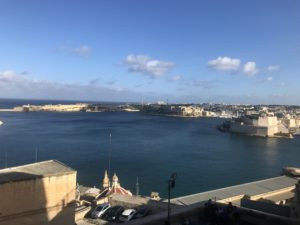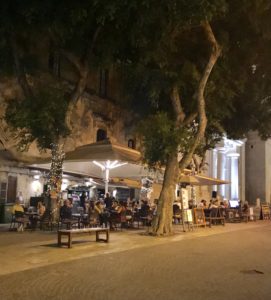


History of Valletta
Valletta is situated above Mount Sceberras. Before the Great Siege it was an empty and rocky area with just a watch tower called St Elmo on it. The Knight of St. Johns wanted to build the city as a place of protection and a refuge for those injured during The Great Siege. Hence the Valletta Project. Initially, it was La Vallette who drew up a plan for the Capital City and his plans were noticed by Pope Pius V and Phillip II of Spain. Both men assisted the Knights financially and Pope Pius lent the services of the Engineer Francesco Laparelli. The work on Valletta lasted 5 years, from 1566 till 1571. La Vallette had died by that time and the Knight Pietro del Monte continued the plan where La Vallette left off. Laparelli moved back to Italy and was replaced by his assistant, the Maltese Architect Gerolimo Cassar. Gerolimo supervised the grand works such as the Sacra Infermeria, St John’s Church, the Magisterial Palace and many others.
Valletta was built with high security walls, creating a fortification, and it was built to keep the enemies away from the city! However, this did not keep the enemies away during World War II where Valletta was bombarded. As a result many buildings were ruined. One of the buildings that remind us about WWII today, is the former Royal Opera House. It is still in a “half built” state today, and is used as an open theatre!
UNESCO World Heritage Site
The whole city of Valletta has been part of the UNESCO World Heritage List since 1980 together with other sites like the Megalithic Temples of Malta and the Hypogeum of Hal Saflieni.
Historical Buildings in Valletta

Valletta is still a very rich City full of important and historical buildings. Valletta’s architecture dates back to the 16th Century and many of its buildings are still in use. Some examples of these buildings are the Co-Cathedral of St. John’s which was earlier the Knights’s Church, the Grand Master Palace, as well as the Auberge de Castille, the office of the Prime Minister.
Fun Fact: The Malta Conference Centre where many national conferences and MICE events are being held, used to be the Sacra Infermeria where many injured soldiers were admitted during the WWII.
European Capital of Culture

In 2012, Valletta was announced as the European Capital of Culture 2018. This initiative started in 1985 to start showcasing the historical and cultural diversity of the European countries. Since the 2102 announcement, the Maltese government has worked hard to regenerate Valletta. A few years prior, Valletta was lacking nightlife. Today, the city has become one of the main nightlife hubs along with Sliema, St Julians, and Bugibba!
The Famous Triton Fountain, which is found at the entrance of Valletta, has also been revamped. It was placed back just in time for the Valletta celebrations. Many Maltese and foreign artists showcased their works all year round. Many events, such a festivals, were held in the city. The main events were the opening of the celebrations on the 14th of January and the closing performance on the 12th of December 2018!
Indeed, the history of Valletta is a fascinating narrative of strategic vision and architectural splendor.


